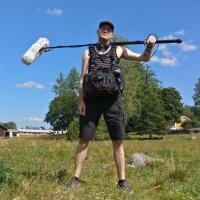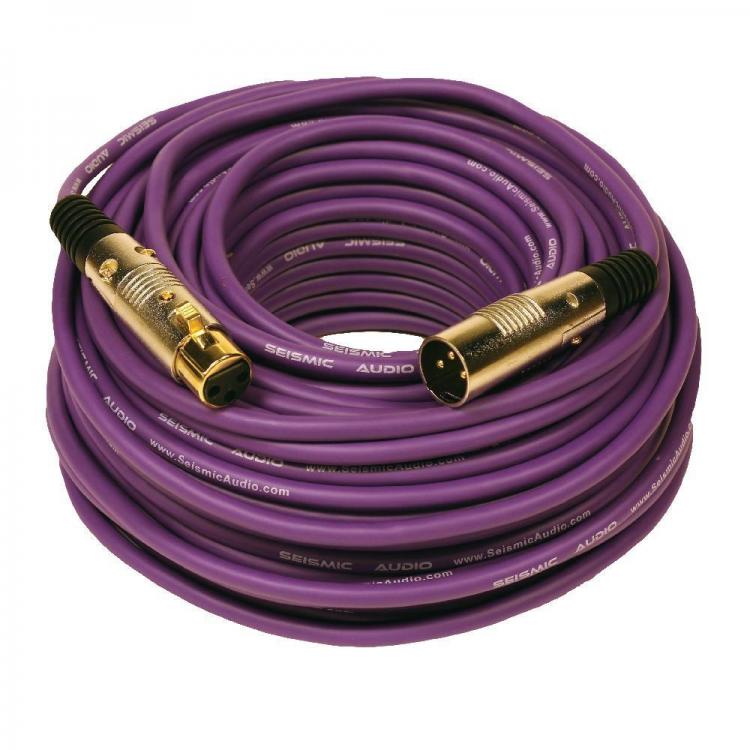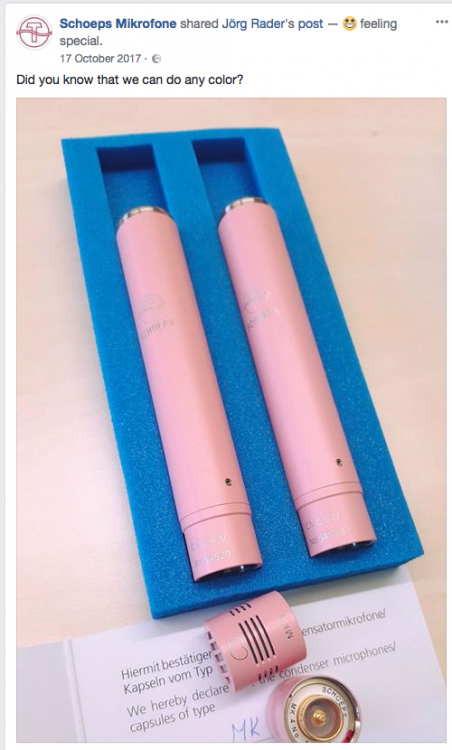-
Posts
148 -
Joined
-
Last visited
-
Days Won
1
Content Type
Forums
Gallery
Store
Everything posted by Ilari Sivil
-
I'd love to see a Neutrik-made low profile XLR connector! The right-angle connectors they make right now aren't the greatest for booming use, since they may rattle a bit unless you adjust the angle slightly, not to mention how heavy they seem.
-
When I cough up the money for some MK41's, I might as well get them in a nice colour. How about chrome plated concealers? Purple cables with gold connectors?
-
-
I wonder if the Neutrik EMC-connectors could be of any help? Seems pretty problematic in any case, especially since induction stoves are pretty nice to use so people may be reluctant to give them up. Another thing to check up on for future gigs, I guess...
-
This would probably be a great YouTube-show for us sound geeks, I don't think it would have much mainstream appeal.
-

Sennheiser AVX. A Viable Solution for Smaller Productions?
Ilari Sivil replied to ctboita's topic in General Discussion
In my limited experience, the AVX is viable for a camera scratch track or really simple single-system use. I'd only do AVX if I had nothing other than AVX, because of the delay and the additional issues it could cause. A client loaned me some on a job once, and while they were really simple to use and the receiver's form factor is really nice, I could not get them to do what I needed to due to the limitations of having only automatic gain. Also, the delay threw me off when using a wired boom with them, things sounded phasier and I heard double transients. It's supposed to be 19ms, which is only ~half a frame at 25fps, but it felt more like a frame's worth of delay for some reason. I think I still have the files somewhere, so I could try to measure if it was in fact more. All in all, I did not like them very much personally, but they could be a great tool for someone who just needs a bunch of cheap wireless and nothing else. A mixer I boomed for recently used an AVX for camera scratch and he told me he liked it, and that he'd never heard any complaints about the delay. In fact, he seemed a bit surprised to learn about it when I asked him if the delay was ever an issue. -
Thanks a lot for the input and the test recordings! The A10 sounds awesome! I guess it's going to take a while before there's hands-on experience on how easy/difficult the A10 transmitters are to hide. Have you tried out the timecode or the internal recording?
-

Wireless equipment on Justin Timberlake's new music video?
Ilari Sivil replied to SBretzke's topic in General Discussion
I might've heard a bit of thinning on that more country-western style singer on the lift part, so there could have been noise reduction involved, hard to say. I'm guessing the lead vocalists' mics would have been hidden on the torso as usual, which to me seems like a bit of a lost opportunity, knowing how good especially singing can sound with a 4060 on the forehead. The only cables I'm seeing going up to the head are for the IEMs and I can't see a mic on the cowboy hat even though we get to see the underside of it. Very impressive in any case, sounded great. The only mics I saw were the pickups on the guitars and the only cables I saw were for the IEMs, at least the first time watching. I'd love to hear about how it was done! -
Hello from Finland. I've lived here all my life and listened to 28 winters now, and snow really does kill reflections. There's still slapback from buildings and trees, but much less than in the summer because nothing reflects from the ground. When it's really cold, everything tends to sound even drier, a bit more present, even if the snow is packed tight in a thin layer, it affects the reflections. I like how it sounds. It can also feel like sound doesn't carry as far, traffic seems quieter for example. Wouldn't put an SPL meter to it, though. I absolutely would not put reverb in a snowy exterior shot, maybe if the action is in the middle of an icy lake lined by trees. Exteriors are hard to get right, usually a slapback delay feels more right to me than any kind of reverb. I've never had to argue about using a slapback instead of a reverb, the people I've worked with usually just want it to sound "right" and I try to do that by emulating physical laws. My ear hasn't picked up a trend of reverb being used in exteriors, I've mostly heard slapbacks if anything.
-
The 2012 Mac Mini is user upgradeable and fixable, unlike many newer machines. It has enough muscle for most audio tasks. You can fit 2 SSD's into one of these, and it runs whisper quiet. The case is almost free of holes and there are none on the top, so it would be more difficult for water to get inside in case of rain or spills. A laptop is very vulnerable because of the keyboard. I've got one as a post production machine and I love it.
-
Why not use coloured heatshrink next to the connectors for length or coloured rings on connectors? That's what I've seen in live concert applications and it's worked like a charm.
-

Easily portable mats/carpets/alternatives?
Ilari Sivil replied to Ilari Sivil's topic in General Discussion
Thanks for all the replies! I prefer mats as a solution since occasionally there will be a lot of people going through the interview setup in a day. If I don't have time to wire them, taking shoes off and putting them back on can also be more trouble socially than carrying / laying a mat. Also, people will occasionally wear shoes that affect their height. I'm thinking throw rugs with some anti-slip material sewn on the bottom, could be easy enough to manage, especially if I come up with a way to easily/reliably attach a rolled up mat on my backpack. Heck, I might even just buy the type of mat we usually use on narratives, they come in many sizes. -
Lately, I've been working from a bag all alone. On the last few gigs I've done, I've needed something to kill noise from feet for jittery talent/interviewees. One time, I survived using the foam insert of my mic case's lid, but on the other time I didn't have my full mic case with me and I couldn't find anything on location to use. As much as I'd love to always have a couple of mats somewhere near location, it's only really possible in bigger narrative productions. Anyone have a more portable solution? I usually ride the local public transport to work, carrying all my gear.
-
And lose my 1kHz reference tone? Seriously though, this is really cool. I got my tinnitus as a teenager in rehearsal rooms, playing in a rock band. I'm really thankful for having no significant hearing damage, I can still pretty much hear full range at 28 years old. I know I'm going to start losing highs soon, though. My tinnitus may be of the somatic type that's discussed in the article, since it gets louder if I clench my jaw.
-

Audio waveform search and match in ProTools?
Ilari Sivil replied to jgbsound's topic in The Post Place
Was there a slate? If the AAF gives you entire files instead of just handles, you could open up the region all the way to the slate to identify the file in question, it's one of the reasons I insist on slating (and getting entire files in the .aaf). Eats up hard drive space, though. Even if you don't have a slate, it's probably easier to check which file it is by just auditioning the bit from the beginning instead of searching the entire file manually. -

Imac for Protools 12 and a 5.1 system?
Ilari Sivil replied to bigyna's topic in Macs... and the other computer
I've worked on a similar setup and it's pretty decent. -
Both work great. With the elastics, it's important to allow some give in the rubber bands, if they're stretched tight, they'll pass more vibration along to the mic.
-
Here's a resource I found a while back when there was a chance of a gig in Norway: https://www.apwpt.org/downloads/handoutfrequencies2015.pdf The URL says 2015 but in it you'll find info from May 2017. I'm from Finland personally, and it's accurate regarding my country at least. I've understood that the 2.4/2.5 GHz-band is pretty congested everywhere due to everyone and their dog using WiFi, and that camera may use that or the 5GHz band for wireless picture/focus pulling.
-
I usually do a split mix when I'm going straight into a camera, which has been more often than I anticipated as of late. I've found that I'm generally able to assess the sound quality quickly by simply taking the other cup off my ear when I want to focus on either the boom or the lavs, but I might do occasional PFLs or headphone preset switching. When I'm doing a split mix, I'm often dealing with multiple speakers in an unscripted situation and I really, really NEED to know if the lavs get hits or rustle. It's the only chance I have of actually evaluating if what I have is any good, since it's likely I'll only get it once and the environments often chaotic enough to need the lav to be good as well. Checking playback can be a luxury on some gigs. :/ I haven't had the chance to do proper narrative stuff knowing what I know now, so I have woefully little experience mixing into a mono track. I'd love to practice, but I don't know how I'd do it. The ready stuff I've heard sounds like they've actually understood me when I've told them that it's boom left, lavs right. I totally get the dual mono approach, but I've yet to come across people who are that clueless. I guess it's just a matter of time.
-
When I monitor a split mix, I try to get the levels so I'll have a stable-ish center image with the boomed dialogue in the middle. I usually do boom hard left, lavs hard right. Whatever comes up on the sides of the stereo image are inconsistencies, be it backgrounds or handling or rustle. Since they come up on the sides, they're really easy to notice because they'll be pretty distracting. If it's on the left, it's the boom, if it's on the right, it's the lavs. I guess it would be a good idea to mix the lavs a bit lower, but it feels like it would throw me off since the mix would "lean left" all the time.
-
On the 633, I've had pretty good results with giving camera a boom track on the left and a lav mix done by Dugan on the right when I work from the bag. It's also nice enough to monitor and the meters do a good job of telling you what the automix is doing. I record pre-fader ISOs as well in case the Dugan acts weird, and if I'm going into the camera via wireless, I'll record the mix as well. I guess I'd miss the automix if I didn't have it, but I probably could have come up with ways to survive without it. Feels like it's worth the price of admission. I never got the hang of mixing when I was in film school and we weren't really properly taught the art. If I hadn't done good internships, I could have come out of film school thinking that a mix track is unnecessary. Just goes to show that nothing beats real world experience.
-
I've found that the peaks tend to tickle the limiters set at the default soft knee/16dBu if I try to keep the VU at 0dBu on my 633, it's been sounding good thus far and the sound still retains enough dynamics to be useful in post. I'm not entirely sure if it's best practice, but I've worked with a couple of established mixers that don't seem worry too much about hitting the limiters a little bit. Lately, I've mostly been doing stuff where an editor will do audio post as well, so I haven't really received feedback on my tracks, I've just played them back at home to see how I've managed. The things I've done have sounded good when they're ready and I've checked them out, but I don't know how much has been done to my tracks, if anything. Now that I think about it, I guess I should give some of my recent tracks a spin to see how they handle in post...
-
...while they are precisely the people who need to understand these things. With great power comes great responsibility, and all that.
-
The price and weight are pretty attractive. It's weird that they don't have the rubber silencers on the side panel zips though, my Stingray has strings instead of metal tabs on those for silent operation. I like that this has 4 attachment points on top. If I were in the market for a bag, I'd definitely look into this one, happy with my Stingray Small for now, though.

.png.279748a58a2b862b7aa5f3b84126e232.png)


